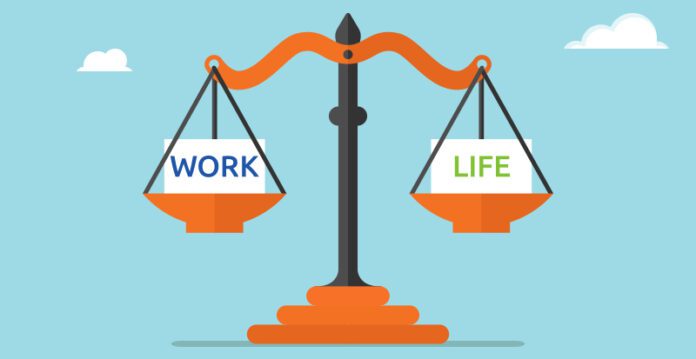Introduction:
In the fast-paced landscape of the modern world, individuals often find themselves ensnared in the relentless demands of their professional lives, leaving little room for personal well-being. Striking a work-life balance between work responsibilities and personal life is crucial for sustained happiness and success. This blog delves into practical, easily applicable strategies to help individuals not only recognize but also implement measures to maintain a healthy work-life balance.
Understanding Work-Life Balance:
Work-life balance isn’t about dividing time equally between work and personal life but ensuring that one doesn’t overshadow the other. Achieving this equilibrium is crucial for preventing burnout and fostering a sense of fulfillment. It contributes to sustained productivity in the workplace while ensuring a healthy and satisfying personal life.
The Importance of Balance:
Finding a balance between work and personal life is not just a luxury; it’s a necessity. Imbalances in either direction can lead to stress, burnout, and ultimately, decreased productivity. Striking the right balance allows individuals to perform at their best both professionally and personally.
Defining Personal and Professional Priorities:
To achieve balance, one must first define personal and professional priorities. Understanding what truly matters in each sphere of life helps in allocating time and energy appropriately. This clarity aids in making informed decisions when it comes to commitments and responsibilities.
Setting Clear Boundaries:
A cornerstone in maintaining a healthy work-life balance is establishing clear boundaries. During working hours, focus on tasks and minimize personal distractions. Similarly, when off-duty, resist the temptation to check work emails or engage in work-related activities. Clearly defined boundaries help create mental compartments for work and personal life, reducing the likelihood of stress bleeding from one domain to the other.
Creating a Workable Schedule:
Creating a workable schedule involves not just setting clear working hours but also incorporating breaks and downtime. A well-structured daily routine ensures that work tasks are efficiently completed, leaving ample time for personal activities and relaxation.
The Art of Delegating:
Delegation is a powerful tool for maintaining boundaries. Acknowledging that one cannot do everything on their own and trusting colleagues or team members with tasks lightens the workload. Delegating responsibilities at work allows for a more manageable workload and reduces the risk of taking work-related stress home.
Prioritizing Tasks:
Effective prioritization is a fundamental aspect of maintaining balance. Identifying tasks that require immediate attention and those that can be deferred is essential. Prioritize based on deadlines, importance, and impact. This approach ensures that crucial work is completed efficiently, allowing for a smoother transition to personal time without lingering work-related stress.
Effective Time Management:
Time is a finite resource, and managing it effectively is key to achieving a balanced lifestyle. Utilize tools like calendars, planners, or productivity apps to organize tasks and deadlines. Allocate specific time blocks for work, family, personal activities, and downtime. Adhering to a structured schedule enhances productivity and ensures that no aspect of life is neglected.
Goal Setting for Work and Life:
Setting clear goals, both professionally and personally, provides a roadmap for individuals. By breaking down larger goals into smaller, actionable steps, individuals can progress steadily without feeling overwhelmed. Goal setting ensures a sense of purpose and direction in both spheres of life.
Learn to Say No:
A common pitfall in the quest for work-life balance is the inability to decline additional responsibilities. Learning to say no when necessary is essential for preventing overload. Assess your existing commitments and be realistic about what you can handle. Politely declining non-essential tasks helps maintain focus on existing priorities, preventing burnout and ensuring quality output.
Setting Boundaries at Work:
Communicate openly with colleagues and superiors about workload and time constraints. Establishing clear boundaries at work helps in managing expectations and ensures that one’s personal time is respected.
Regular Breaks and Downtime:
Taking breaks during work hours is not a luxury but a necessity for maintaining productivity and mental well-being. Whether it’s a short walk, a coffee break, or a few moments of relaxation, incorporating regular breaks into the work routine rejuvenates the mind and prevents burnout. Similarly, dedicating specific time for leisure and hobbies during personal hours contributes to overall life satisfaction.
Mindful Breaks:
Mindful breaks involve consciously stepping away from work tasks and engaging in activities that promote relaxation and rejuvenation. Whether it’s practicing mindfulness meditation or simply taking a stroll, these breaks contribute significantly to mental well-being.
Weekend Rituals for Rejuvenation:
Weekends play a crucial role in work-life balance. Establishing rejuvenating weekend rituals, such as spending time in nature, pursuing hobbies, or simply unwinding with loved ones, contributes to overall life satisfaction.
Investing in Self-Care:
Prioritizing self-care is crucial for maintaining a healthy work-life balance. This includes physical exercise, adequate sleep, and activities that bring joy and relaxation. Allocate time for activities that recharge your energy and contribute positively to your mental and emotional well-being. A well-nurtured self is better equipped to handle the challenges of both professional and personal life.
The Role of Physical Exercise:
Regular physical exercise not only contributes to physical health but also has profound effects on mental well-being. Whether it’s a daily workout routine, yoga, or a simple walk, incorporating exercise into the routine is a key aspect of self-care.
Quality Sleep as a Priority:
Adequate and quality sleep is non-negotiable for maintaining a healthy work-life balance. Establishing a consistent sleep routine and creating a conducive sleep environment are crucial for overall well-being.
Open Communication:
Effective communication is vital in both professional and personal relationships. Clearly express your needs and limitations to colleagues, superiors, and family members. Establishing open lines of communication fosters understanding and support, creating a conducive environment for maintaining a healthy work-life balance.
Communication at the Workplace:
Openly communicating with colleagues and superiors about workload, challenges, and the need for support is essential. This transparency ensures that everyone is on
Conclusion
In summary, maintaining a healthy work-life balance requires setting clear boundaries, prioritizing tasks effectively, investing in self-care, and fostering open communication. By adhering to these principles, individuals can harmonize their professional and personal lives, reducing stress and enhancing overall well-being. Striking this equilibrium ensures sustained success in the workplace and a fulfilling personal life. Embrace these strategies to cultivate a life of purpose, balance, and lasting satisfaction.










